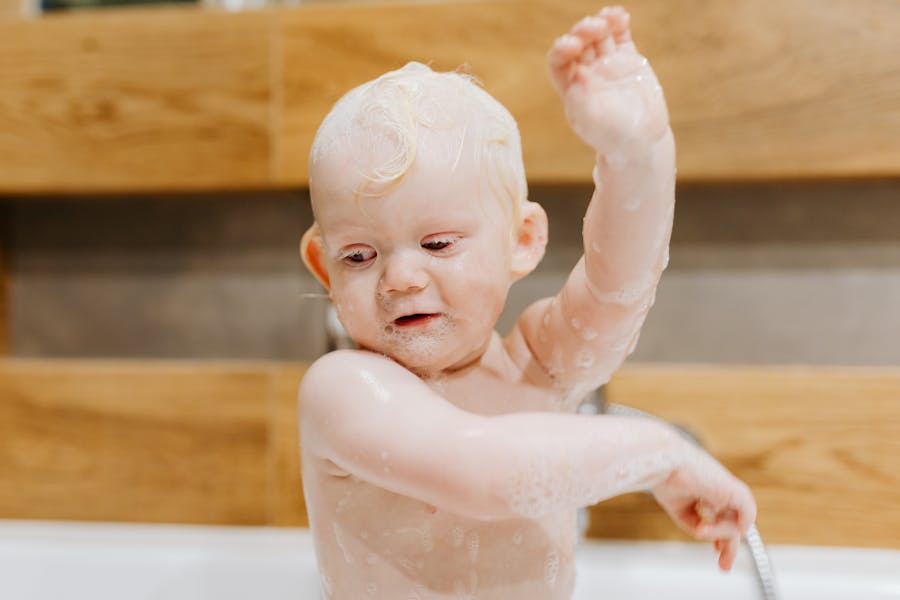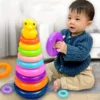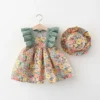Bath time is an important part of your baby’s daily routine, providing opportunities for bonding, sensory exploration, and relaxation. As your baby grows, you may wonder what age can baby sit in bath without seat. Transitioning from a bath seat to sitting independently is a significant milestone, but it comes with safety considerations. This guide will explore the appropriate age for this transition, signs of readiness, and essential safety guidelines to ensure a safe and enjoyable bathing experience.
Understanding Infant Development
Before determining when your baby can sit in the bath without a seat, it’s important to understand the stages of physical development.
Key Milestones
- Neck and Head Control:
- By around 4 to 6 months, most babies develop sufficient neck strength to hold their heads up independently, which is crucial for sitting safely in a bath.
- Core Strength:
- Sitting up without support typically develops between 6 to 9 months. This is a key milestone indicating that your baby may be ready to transition to sitting in the bath without a seat.
Recommended Age for Sitting in the Bath Without a Seat
The general recommendation is that most babies can safely start sitting in the bath without a seat around 6 to 12 months of age. However, this can vary based on individual development.
Factors Influencing Readiness
- Physical Development: Every baby develops at their own pace, so while some may be ready at 6 months, others may take a bit longer.
- Comfort Level: Some babies may feel more comfortable and stable sitting in a bath seat for longer, even if they are physically capable of sitting without one.
Signs Your Baby Is Ready to Sit in the Bath Without a Seat
As a parent, you’ll want to look for specific signs that indicate your baby is ready for this transition:
Physical Signs
- Ability to Sit Up: Your baby should be able to sit up independently without support, maintaining balance while reaching for toys or other items.
- Good Neck Control: Your baby should demonstrate strong neck control, keeping their head upright without wobbling.
Behavioral Signs
- Curiosity About Bathing: If your baby shows excitement and curiosity about being in the bath or playing with water, it may be a good sign they’re ready to explore sitting without a seat.
- Comfort in Water: If your baby appears relaxed and comfortable during bath time, they may be more adaptable to sitting independently.
Safety Guidelines for Bathing Without a Seat
When transitioning to sitting in the bath without a seat, safety is paramount. Here are essential guidelines to follow:
Supervision
Always supervise your baby during bath time. Even if your baby is sitting independently, a moment of distraction can lead to accidents.
Non-Slip Surfaces
- Use Non-Slip Mats: Place a non-slip mat in the tub to prevent your baby from slipping. This is especially important as babies are often wiggly and may not yet have full control over their movements.
Water Level
- Keep Water Shallow: Use only a few inches of water when bathing your baby without a seat. This reduces the risk of drowning and allows you to easily reach your baby if necessary.
Creating a Safe Bathing Environment
To enhance safety during bath time, consider the following tips:
Maintain a Comfortable Room Temperature
Ensure the room is warm enough to keep your baby comfortable, ideally between 70°F and 75°F (21°C to 24°C). This helps prevent your baby from getting cold once they are out of the water.
Dim Lighting
Soft, dim lighting can create a calming atmosphere for bath time, helping your baby relax.
Keep Supplies Within Reach
Gather all necessary bath supplies—such as shampoo, washcloths, and towels—before starting. This prevents you from leaving your baby unattended to grab something you may have forgotten.
Common Concerns and Solutions
Addressing Worries
Many parents have concerns about transitioning from a bath seat to sitting independently. Here are some common worries and how to address them:
- Fear of Slipping: If you’re worried about slipping, ensure that the bath area is equipped with non-slip mats and that you’re always holding onto your baby.
- Baby’s Reaction: If your baby seems upset or uncomfortable, take your time introducing them to sitting in the bath without a seat. Consider practicing sitting during playtime outside of the bath.
Consulting Healthcare Professionals
If you have any doubts about your baby’s readiness to sit in the bath without a seat, it’s a good idea to consult a pediatrician.
When to Seek Advice
- Developmental Concerns: If you notice that your baby is lagging in developmental milestones related to sitting or balancing, a discussion with your doctor can provide insights and reassurance.
- Specific Issues: If your baby has a medical condition or has shown discomfort in water, it’s essential to get professional guidance before making the transition.
Conclusion
Determining what age can baby sit in bath without seat involves understanding your baby’s developmental milestones and comfort levels. Generally, babies can start sitting in the bath without a seat between 6 to 12 months of age, but readiness can vary from child to child.
By observing physical and behavioral signs of readiness, adhering to safety guidelines, and creating a secure bathing environment, you can ensure that bath time is a safe and enjoyable experience for both you and your baby.
FAQ’s
- What age can baby sit in the bath without a seat?
A. Most babies can start sitting in the bath without a seat around 6 to 12 months, depending on their individual development. - How do I know if my baby is ready to sit in the bath without support?
A. Look for signs such as the ability to sit up independently, good neck control, and comfort in water. - What safety measures should I take when bathing my baby?
A. Always supervise your baby, use non-slip surfaces, keep water shallow, and have bath supplies within reach. - Can I use a bath seat for longer than recommended?
A. It’s best to follow recommended guidelines for safety. If your baby shows signs of discomfort, consider transitioning to sitting without a seat. - When should I consult a doctor about my baby’s readiness for bathing?
A. If you have concerns about your baby’s developmental milestones or specific issues related to bathing, consult your pediatrician for personalized advice.









